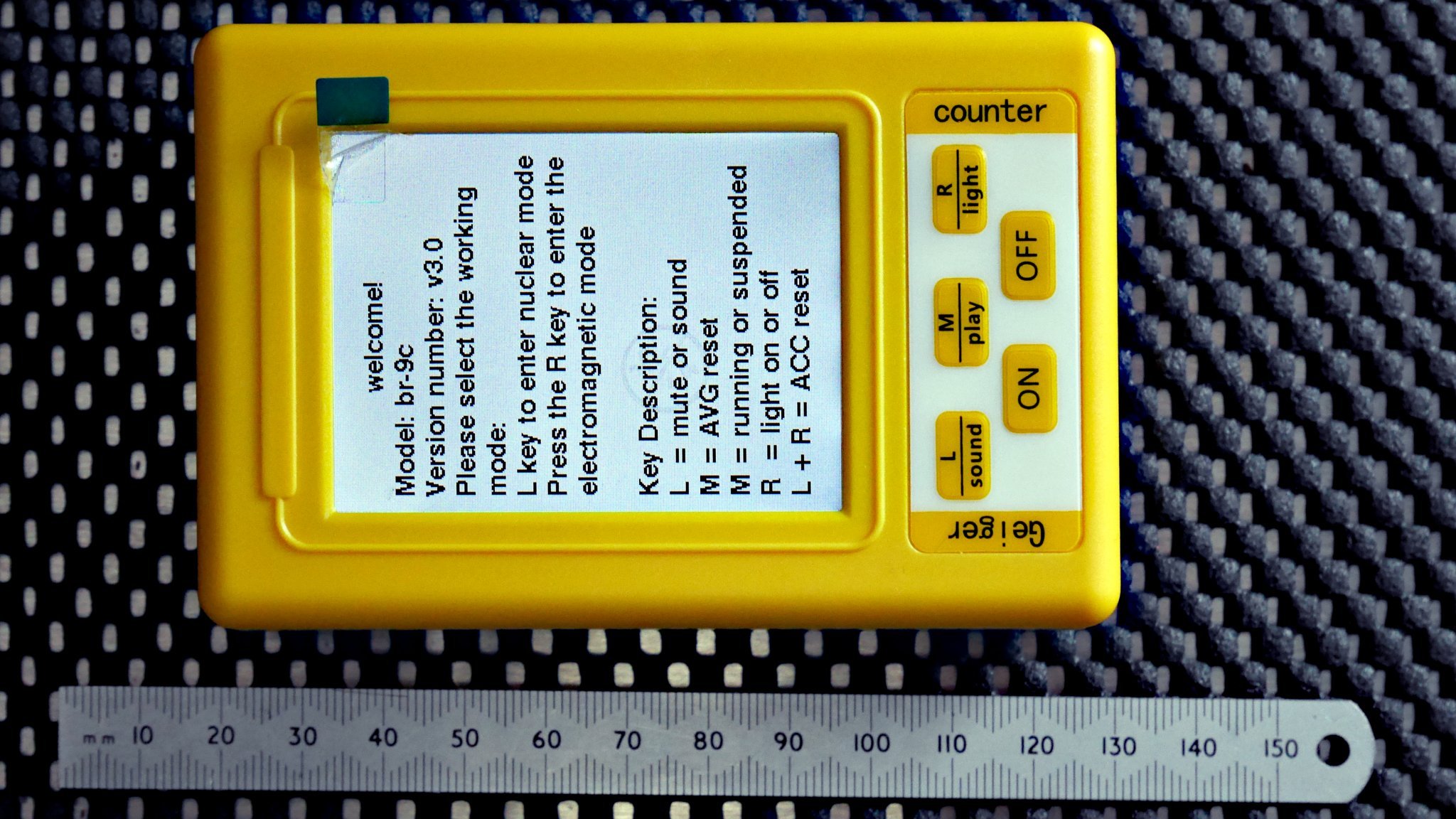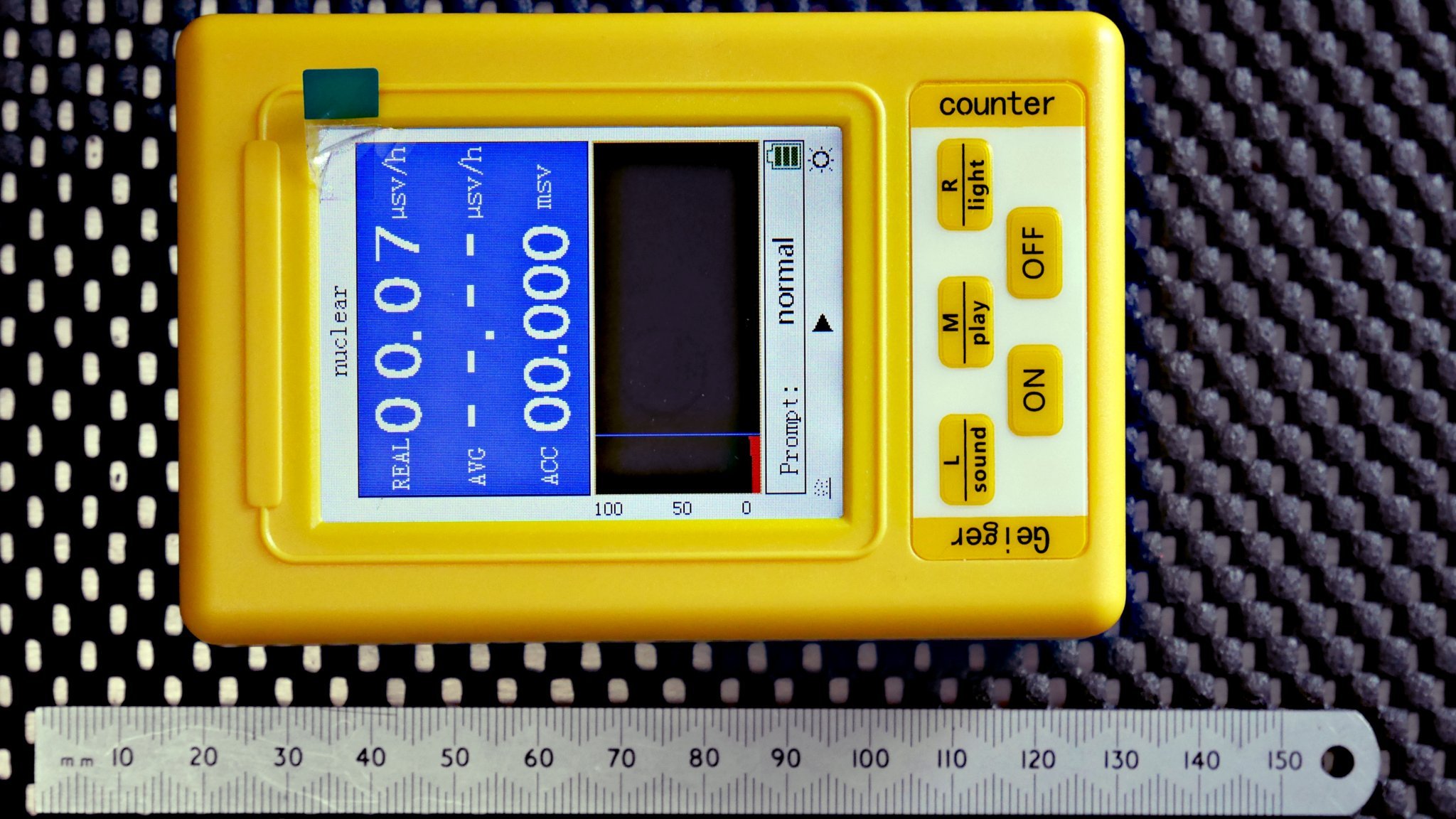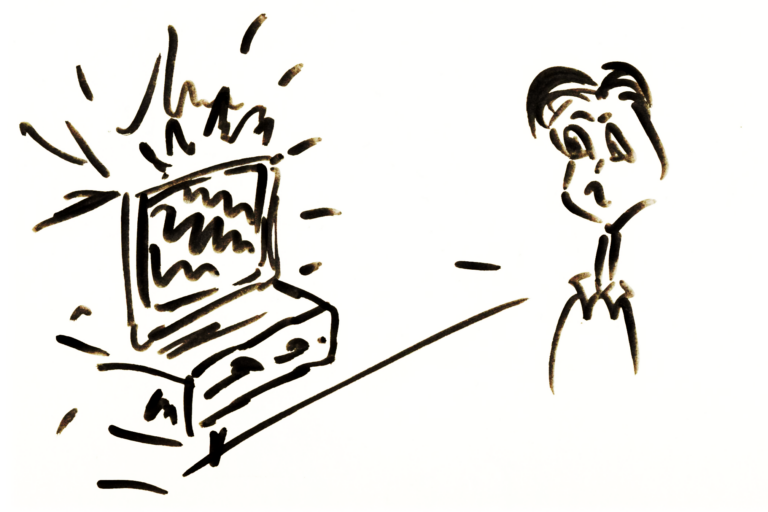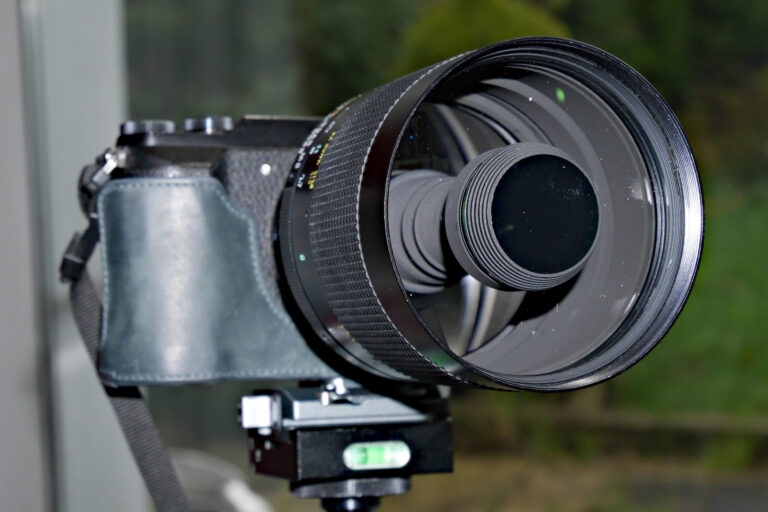BR-9C combined Geiger counter and EMF meter – initial impressions
I just bought a Geiger counter from a seller on AliExpress. Well it’s actually a Geiger counter and EMF (electromagnetic field) meter, all combined into a single device. I have no idea who actually makes these things. There is no branding other than a model number “BR-9C”. Though I did discover that the enclosures used in the BR-9 series are colour coded. The Geiger counter is blue. The EMF meter is black and the combined Geiger and EMF unit is yellow.
I have not had time to test this thoroughly, or to compare it with other similar devices. However my initial impression is very good. This is what I leaned so far…
First impressions of the BR-9C
The bright yellow case does look a bit cheap – a tad ironic considering it is the most expensive in the series. It also has the feel of a home made electronics project. But I don’t mind that. Measuring just 105mm x 70mm x 30mm, and weighing just under 200 grams, with batteries. it has a solid well-built feel in-the-hand and its buttons have a reassuringly positive click.
I fitted three freshly-charged NiMH IEC “R6” (ANSI “AA”) batteries, pressed the “On” button and the first thing that appears on screen as the device boots up is a picture of Ernest Rutherford (as per this article’s featured image). Rutherford is generally regarded as the “Father of Modern Physics“. Whilst this adds nothing to the performance of the device of course, from a human perspective, I think this is a very nice touch indeed. It suggests that its creators possess a certain degree of enthusiasm about the device they have created. I like that.
Next comes the instructions screen, which is surprisingly informative. Then you then have a choice of which feature you switch to switch on – Geiger counter or EMF meter.
Geiger counter function on the BR-9C
I started with the “L” button. That puts it into “Nuclear”mode – i.e. its Geiger function. It recorded a base count between about 0.1 to 0.2 microsieverts per hour (µSv/h). It shot up to around .37µSv/h when I placed it close to one of our smoke alarms. The sensors in which are mildly radioactive. However, that represents a small and relatively insignificant rise.
However, I just found a reasonably strong source lying around my workshop – an old brass British Army issue oil-filled compass. (Dated 1939, c/w Broad Arrow mark). I did a deal with a school mate for it many, many years ago. I swapped a Dinky Toy Rolls Royce Silver Shadow, as I recall. The compass dial used to be luminous when it was new,. But most of the paint has blown itself all over the dial now due to its radioactive content.
Back in those days, most luminous paint was radioactive. In any event, it caused my dosimeter to click like crazy and record just over 40µSv/h – roughly 200-400 times the background-count!
TheBR-9C device uses a miniature Geiger-Muller tube, c/w a microprocessor and a 70mm colour TFT screen. However this type of device does not distinguish between Beta, Gamma or X-Ray. Nevertheless, I’m pretty sure the luminous paint only emits Beta radiation. At just 20cm distance, the count returns to near-background level. Of course, this is a low-budget tester and I have no way of determining its accuracy. But at least I know it is doing something!
Measuring electromagnetic fields with the BR-9C
To select EMF measurement, you need to switch off the device, and switch it back on again, remembering to select the “R” key for “Electromagnetic mode”.
This is quite fascinating. It detects WiFi signals and other radio signals – certainly up to 2.4GHz. And it detects electrical noise and magnetic fields from switch mode power supplies. Also detected microwave leakage around our microwave oven. And it goes bonkers if you put it next to a mobile phone and make a call!
EMF mode displays three metrics: radiated power per unit area (µV/cm²), voltage field, volts per metre (V/M) and magnetic field in microTeslas (µT).
Power supply
The BR-9C works fine on 1.2 volt rechargeable batteries. It also charges these batteries via its micro USB port. Pity that it isn’t a USB C. Though I’m told that some BR-9 series do actually have USB C charging sockets.
Overall
I’ve still not had a chance to really put it though its paces. Nor have I looked inside yet. But my initial impressions are that this is a super little device, well worth the £50 or so plus VAT that I paid for it.
- The site from which I purchased my BR-9C: https://www.aliexpress.com/item/1005003980883235.html











Hi, I‘m not so sure about the colour coding. Mine is black and does not detect EMF, only nuclear radiation in micro sieverts.
Interesting. The article is three years old. So it’s possible things may have changed in that time.